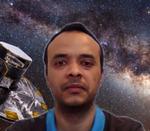


Degree: Ph.D.
Position: Associate Professor
Division: Astrophysics II (Warsaw)ORCID: 0000-0003-0942-7855
Office: 115
Phone: +48 223296115
Personal website: http://users.camk.edu.pl/rsmiljanic/
E-mail: rsmiljanic@camk.edu.pl
Rodolfo Smiljanic is an associate professor at the Nicolaus Copernicus Astronomical Center (CAMK) in Warsaw. He is an expert on the determination of chemical abundances from high-resolution spectra of late-type stars.
He received his Ph.D. in astrophysics at the Department of Astrophysics of the University of São Paulo, Brazil, in 2008. After a short nine months post-doc in São Paulo, he moved to Garching bei München, Germany, for a fellowship (2009-2012) at the European Southern Observatory (ESO). During the fellowship, he dedicated 25% of his time to work as support astronomer at ESO’s User Support Department. Afterwards, he moved to CAMK, Poland, where he has held the positions of post-doc (2012-2015), assistant professor (2015-2018), and associate professor (since 2018). He obtained his habilitation in 2018 for his work on accurate and precise stellar parameters and chemical abundances.
Prof. Smiljanic is a member of several large international collaborations. He coordinated the working group on the analysis of high-resolution spectra of the Gaia-ESO Large Spectroscopic Survey (2010-2021). He is one of the co-PIs of the consortium building CUBES, a new near-UV spectrograph for the 8m Very Large Telescope (VLT) of ESO. He is a member of the Gaia Science Team since November 2022. He is also a member of the science team of HR-MOS, a new high-resolution multi-object spectrograph proposed for the VLT and a steering committee member in the project of the Wide-field Spectroscopic Telescope, a plan to build a 12-m telescope dedicated to multi-object spectroscopy. In addition, Prof. Smiljanic is a member of the MSE science team, and of working groups of the 4MOST Stellar Clusters Survey, the PLATO mission, and the ChETEC-INFRA network. He also participated on the working group that wrote the Ethics Statement of the European Astronomical Society (approved in 2018).
According to the Scopus database (Aug. 26, 2022), Prof. Smiljanic is an author and co-author of 103 peer-reviewed articles that have been cited almost 2 600 times. The link to his publications included in the service NASA ADS can be found here.
At CAMK, Prof. Smiljanic leads the SAGA (Stellar Abundances and Galactic Archaeology) team. The team is exploring novel methodologies, including machine learning and Bayesian inference methods, to extract complete, precise, and accurate chemical abundances from large samples of stellar spectra. The current members are three Ph.D. students: André Rodrigo da Silva, John E. Martínez Fernández, and Sergen Özdemir.
News of the SAGA team can be found in social media: Twitter, Facebook, Mastodon, and Instagram.